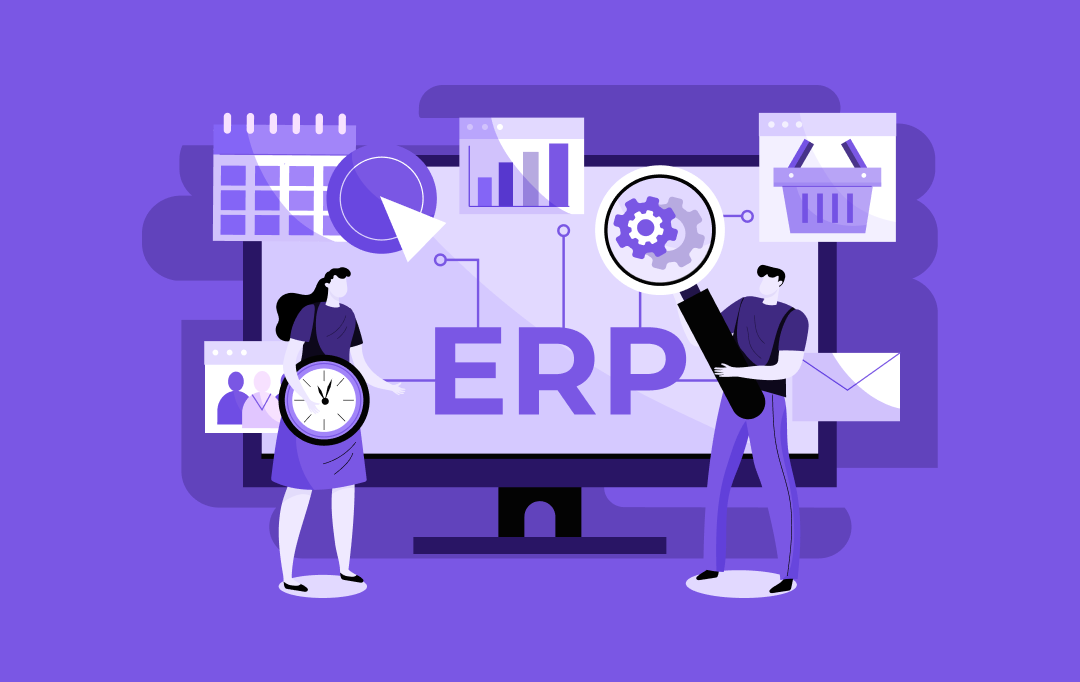- The Three Types of Emissions
- Why Should Businesses Care About an Energy Management Software Solutions?
- Regulatory environment
- Impact on brand value
- Financial benefits of lowered carbon footprint
- Smart data insights
- The Different Facets of Building Energy Management Software
- Who uses energy management systems for carbon neutrality?
- Key features of energy management software development
- The cost to develop energy management systems
- FAQs around building energy management software
A code red warning for humanity has been declared on a global scale. The world has warmed by more than 1 degree celsius and is on schedule to get warmer by another 2.7 degrees celsius.
Carbon dioxide is one of the biggest contributors to this climate change with its long residence time in the atmosphere and being one of the most potent green house gases. As the level of carbon dioxide continues to rise, the already-warming Earth will bring in more extreme weather fluctuations and even catastrophic rise in sea levels, making many portions of the globe uninhabitable. In what seems like a race against time, several countries have joined the pledge of net zero emissions, each with their own timelines.

Supporting them in the move towards combating climate change, companies are coming up with their own carbon neutrality strategies with energy management systems. Companies, across sectors, are relying on energy management systems for carbon neutrality to keep their contribution to Scope 1, 2, and 3 emissions in check.
[Also Read: AI in Climate Change: Bridging Innovation and Sustainability]
In order to truly understand the scope of these energy management systems for carbon footprint reduction, it is critical to understand the kind of emissions companies generate and how these software help manage them.
The Three Types of Emissions
Scope 1 are the direct emissions that are controlled or owned by a company, while scope 2 and 3 emission are the consequences of the company activities that are not controlled or owned by them.
Scope 1 emissions
Examples of these emissions come from fuel burning in fleets of vehicles.
Scope 2 emissions
Examples of this emission can be seen in the electric fleet vehicles which accounts for the generation of the electricity they have been powered from.
Scope 3 emissions
Example of this is when the companies purchase, use and discard products from vendors.
Now that we have looked into the emissions that businesses should account for when building energy management software, it is equally important to understand what is in it for businesses.
Why Should Businesses Care About an Energy Management Software Solutions?
From a business perspective, investing in systems that lower carbon emissions can seem counterproductive and expensive in the short term. However, with the consumers becoming outspoken about environment protection, there is a growing expectation that the companies they follow or buy from should be environmentally focused as well.
In addition to their image, there are other benefits of EMS for achieving carbon neutrality.
Regulatory environment
With the need for cutting carbon emissions growing at a rapid rate, industry and government regulations are being implemented on a mass scale. Failing to comply with which can result in fines, penalties, and even reputational damage.
Impact on brand value
With the growing focus on carbon neutrality, consumers have started looking up to the companies they believe in, for their response. In this scenario, businesses which promote sustainability and build strategies for carbon neutrality using energy management systems are likely to gain their investors, customers, and workers’ trust.
Financial benefits of lowered carbon footprint
On high level lowering carbon emissions can be extremely expensive and have very low return. However, these initiatives will better your company’s position in the long term by attracting investments, lowered insurance premiums, and better credit rating – all of this leading to better revenues in the long term.
Smart data insights
Data around energy use comes from different places and formats in a company. Putting all these data together and analyzing them manually is a complex task. Implementing EMS to achieve carbon neutrality ensures that all the data is gathered and displayed in one place for easy comparison.
These benefits of EMS for achieving carbon neutrality can only be achieved with a software that answers the role of energy management systems in carbon neutrality in the most holistic manner. While there are a number of software that makes reducing carbon emissions with energy management systems possible, finding one that would fit into your precise business process can be challenging.
This is why enterprises tend to invest in custom energy management software development.
Let us look into what that entails.
You may like reading: How AI is Transforming the Energy Sector – 10 Benefits, Use Cases, and Examples
The Different Facets of Building Energy Management Software
Energy management software development process consists of elements like – choosing who the software is built for, the feature sets, and the costs involved in developing and maintaining the system.
Who uses energy management systems for carbon neutrality?
Energy management systems development process starts with knowing the target audience. The software can be used in office buildings, hospitals, restaurant sites, hotels, homes, and factories.
Regardless of the type of energy management software, the end goal should be to monitor energy usage and come up with ways to keep carbon emission in control. However, the thing that would differ is the scope of software interface according to different industry types.
Also Read: 10+ Climate Tech Startup Ideas to Launch in 2025
Key features of energy management software development
A holistic energy management software is made up of four elements –
- Sensors which measure energy usage and send data to EMS platform
- EMS interface through which you can manage and monitor energy usage
- A control system which transmit the command from EMS interface
- Connected smart devices system to control equipment in real time.
Based on these elements, the core features that should be considered during energy software development are –

Tracking
The core purpose of carbon management software or energy management systems for carbon footprint reduction is to track energy consumption across devices by gathering the data from different meters and circuits and presenting them on a device.
Reporting
During custom energy management software development, it helps to have a system that would generate real-time current and historic reports which are compliant with carbon reporting requirements like TCFD, SECR, and ESOS.
Smart devices connection
The success of implementing EMS to achieve carbon neutrality lies in automating the devices and processes that are generating excess carbon dioxide. Achieving this would require a system where all the devices are connected with each other through the EMS platform.
Cloud access
The energy management systems for carbon neutrality should be kept on an architecture from where it can be accessed and modified in real-time. This is the reason why having a cloud-based platform gathering, tracking, and automation of energy spending makes the perfect business sense.
Real-time notification
The impact of energy management systems on carbon neutrality will only be seen when the businesses are able to act on it in real time. For this, the platform will need to send real-time notifications when the energy consumption goes beyond pre-decided numbers.
The cost to develop energy management systems
Building comprehensive energy management systems for carbon neutrality would come at a cost that can range anywhere between $50k to $70k. The exact estimate will depend on the energy goals you have set, the depth of tracking you require, number of connected devices, and the integration of a smart solution that would give you suggestions around energy consumption and carbon neutrality.
[Also Read: How Much Does It Cost to Build an Energy Trading Software]
With this, you have looked into the many facets of energy management software development that would help you integrate a custom-made solution in your carbon emission combat strategy. But what is important here is to partner with an energy management software development company in New York that specializes in the energy sector and has helped businesses in implementing strategies for carbon neutrality using energy management systems.
This is where Appinventiv comes in. We have partnered with a number of businesses across real estate and manufacturing who have a focus on carbon neutrality and have extended our software development services around EMS creation and integration. Recently our engineering team worked with a manufacturing plant where we built an EMS platform that enables owners to –
- Track energy flow in their factory
- Control energy expense by implementing conservation measures
- Automate equipments in a way that all the potential equipment, electrical failures could be tracked in real-time
- Remain compliant with the industry requirements around energy usage.
If you too are looking for a system where you are able to track your current, historical carbon emission rate and get alerts when it surpasses the set targets, reach out to us.
FAQs around building energy management software
Q. What is an energy management system (EMS) and how does it contribute to carbon neutrality?
A. An energy management system is basically a combination of tools and strategies using which companies understand and manage their energy consumption by controlling their electric utilities. By making it easy for businesses to track their energy consumption, the software helps them in ensuring that their current practice towards curbing carbon emissions becomes equal to their historic carbon emissions.
Q. How can energy management systems help reduce carbon footprint?
A. It works by accessing how carbon neutral the supply chain is, managing the energy consumption, reviewing the main energy sources and finding ways to automate them, and seeking out advice for low carbon emission opportunities.
Q. What are the benefits of implementing an EMS for achieving carbon neutrality?
A. The advantages of implementing energy management systems for carbon neutrality includes better brand image, lowered use of material and energy, reduced waste, and getting investors, users interest.


- In just 2 mins you will get a response
- Your idea is 100% protected by our Non Disclosure Agreement.

Custom Development or White Label Solutions: Which is Right for Your Business?
Key takeaways: 77% of companies are prioritizing digital transformation; the right tech approach is crucial for staying competitive. Custom development offers tailored solutions for unique needs, flexibility, and long-term scalability. Whereas, white-label solutions provide quick market entry, cost-efficiency, and easy customization for standard needs. Appinventiv’s expertise helps you navigate custom development vs white-label to choose…

ERP Integration in Australia - Why It Is Essential and How to Do It Right
Key takeaways: ERP integration enables operational efficiency, reduced costs, and enhanced decision-making. Healthcare, finance, manufacturing, retail, and all the other sectors are benefiting from ERP integrations in Australia. While ERP integration can be costly, ranging from AUD 45,000 - AUD 450,000, it leads to significant long-term savings and scalability. Compliance with Australian regulations is critical,…

Predictive Analytics Software Development - Features, Benefits, Use Cases, Process, and Cost
Key Takeaways Predictive analytics helps businesses shift from “what has happened” to "what will happen," enabling proactive strategies rather than reactive ones. Real-time analytics and AI integration are driving the growth of predictive analytics, making it more accurate, accessible, and critical for business success. Custom predictive analytics solutions can enhance customer satisfaction, reduce costs, and…

















